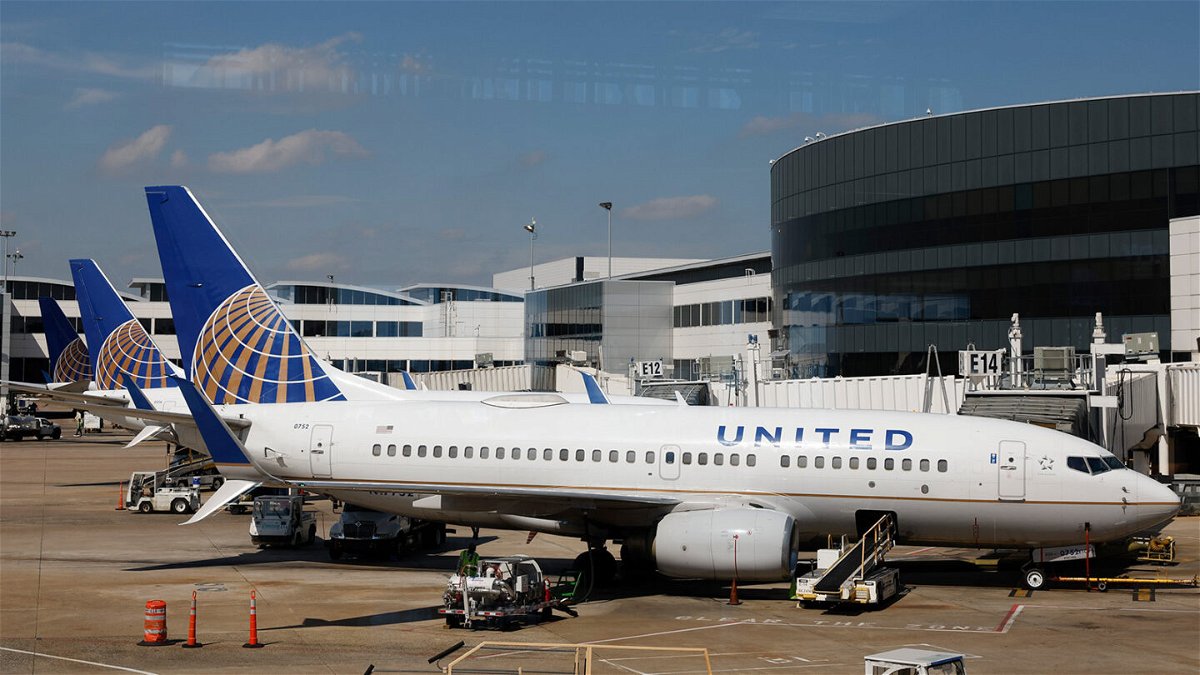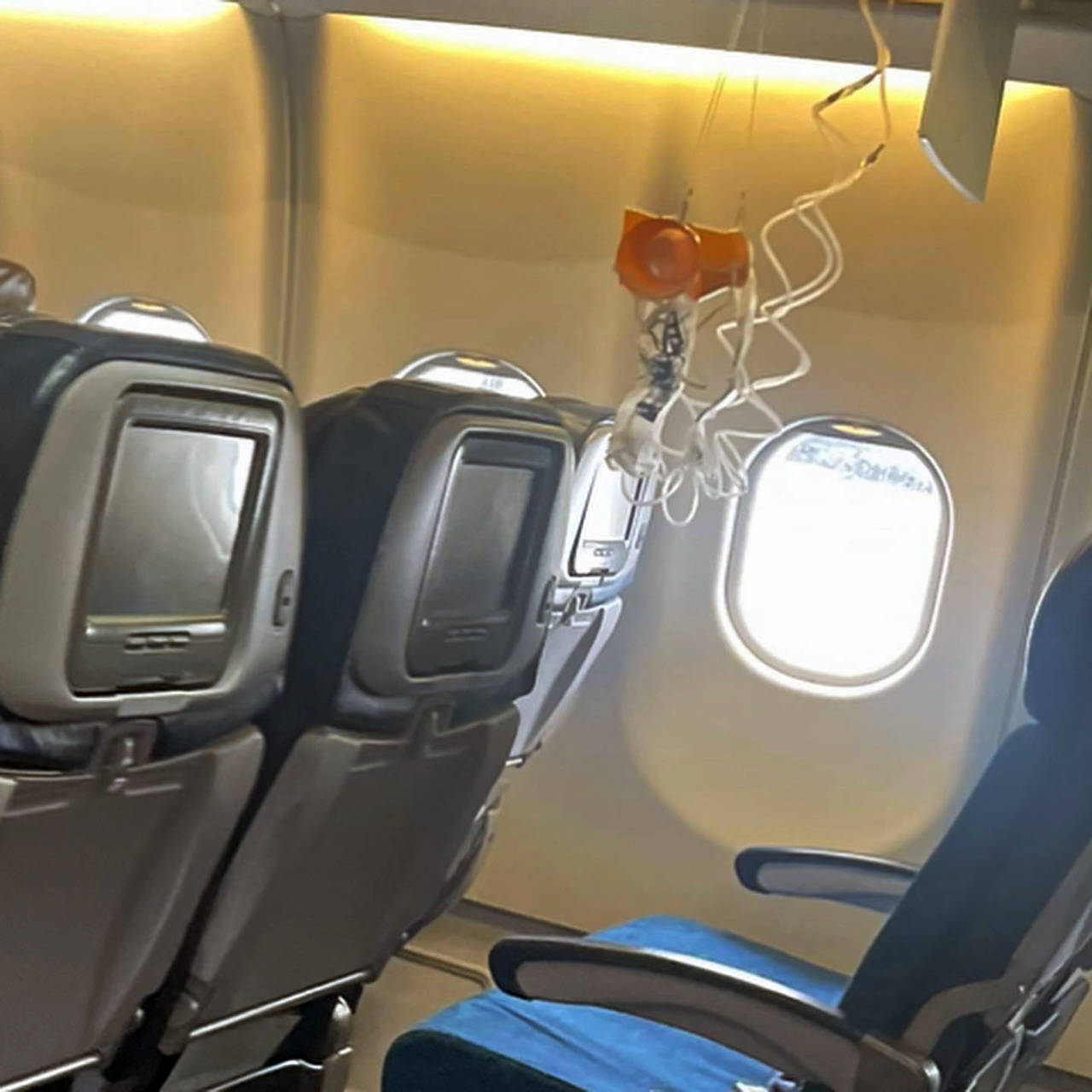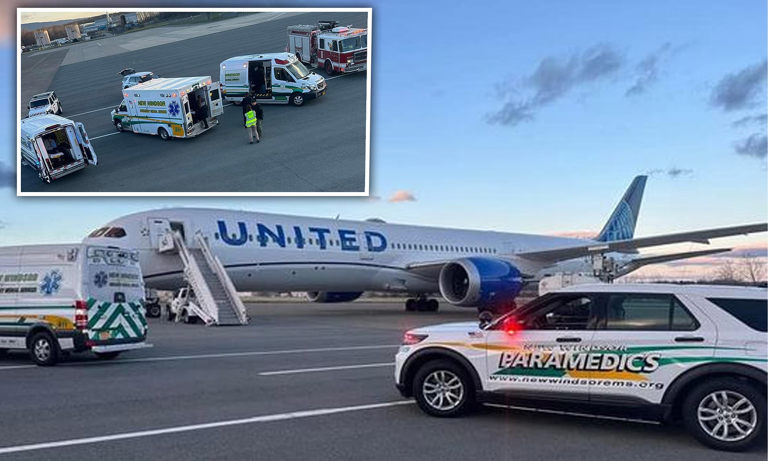On March 30, 2024, United Airlines Flight 85, en route from Tel Aviv to Newark Liberty International Airport in New Jersey, experienced severe turbulence due to high winds, leading to an emergency landing at New York Stewart International Airport. This incident was reported by multiple sources, including USA TODAY, Band of Outsiders, and ABC7 NY, providing a comprehensive overview of the event.
The flight, carrying over 200 passengers, was forced to divert due to the sudden change in wind direction, which caused several minutes of severe turbulence. This unexpected change in wind direction was a significant factor in the decision to abort the landing and divert to Stewart International Airport, located 70 miles north of New York City. The pilots reported experiencing “wind shear,” a sudden change in wind direction, which is a common cause of turbulence in flight operations.

Table of Contents
Key Takeaways:
- Severe Turbulence: The incident highlights the challenges of severe turbulence in flight, which can lead to injuries and require medical attention for passengers.
- Emergency Procedures: The flight crew’s quick response to the turbulence and the subsequent emergency landing at New York Stewart International Airport demonstrate the importance of preparedness and adherence to safety protocols in aviation.
- Passenger and Crew Safety: The focus on the safety and well-being of passengers and crew, including the provision of medical attention and the continuation of the flight to its intended destination, underscores the airline’s commitment to passenger safety.
- FAA Oversight: The involvement of the FAA in investigating the incident reflects the regulatory body’s role in ensuring airline safety and addressing any underlying issues that may have contributed to the turbulence.
- Airline Response: United Airlines’ actions, including the provision of medical attention and the continuation of the flight, demonstrate the airline’s commitment to passenger safety and operational continuity in the face of unexpected challenges.
United Flight Turbulence: Injury Details and Passenger Identities
Upon landing at Stewart International Airport, emergency crews were on hand to assist passengers. According to Michael Bug, chief of operations from New Windsor EMS, the first EMS unit on the scene encountered a flight crew who advised that multiple passengers were complaining of nausea and some chest pain due to the turbulence. Seven passengers were transported to a local hospital for observation, with no serious injuries or ailments reported. However, most passengers expressed a desire to get checked out at the local emergency room.

The atmosphere inside the plane was described as chaotic, with elderly passengers requiring medical care, children and babies crying, and a general sense of panic among passengers. Flight attendant Jonathan Grossman highlighted the distressing conditions inside the plane, noting that the atmosphere was bizarre, and many passengers suffered from motion sickness. Medical personnel onboard treated about 15 passengers onsite.
The flight was initially cleared to land in Newark after its 11-hour flight from Israel, but the sudden change in wind direction led to a “go-around” decision by the pilots. The plane was low on fuel at the time, which added to the urgency of finding a safe landing spot. After refueling at Stewart International Airport, the plane continued its journey to Newark, with the most severely ill passengers being transported to Montefiore St. Luke’s Cornwall Hospital for further evaluation.
This incident underscores the importance of preparedness and response in aviation, highlighting the challenges faced by pilots and medical personnel in managing unexpected situations during flight. Passengers reported a range of health issues, including motion sickness, nausea, and chest pain, reflecting the physical and emotional impact of severe turbulence on air travel.
United Airlines Flight 85’s diversion to Stewart International Airport due to severe turbulence and high winds illustrates the critical role of air traffic control, pilot decision-making, and emergency response in ensuring passenger safety during flight. The incident also sheds light on the challenges passengers face during such events, emphasizing the need for airlines to provide comprehensive support and medical care to passengers affected by turbulence.
How does the air traffic control system work to ensure safe landings and avoidance of turbulence?
The air traffic control (ATC) system plays a crucial role in ensuring safe landings and avoiding turbulence by providing pilots with critical information about the weather conditions, including turbulence, that they might encounter during their flight. This system is designed to help pilots make informed decisions about their flight paths and speeds to minimize the risk of turbulence and ensure a safe landing.
Understanding Turbulence
Turbulence is an irregular motion of the air resulting from eddies and vertical currents. It can range from minor bumps to severe conditions that can momentarily throw an airplane out of control or cause structural damage. Turbulence is associated with various weather phenomena, including fronts, wind shear, and thunderstorms.
Turbulence Intensity
Turbulence is classified into light, moderate, severe, and extreme based on its intensity. Light turbulence causes slight changes in altitude and/or attitude, moderate turbulence is similar but more intense, severe turbulence causes large and abrupt changes in altitude and/or attitude, and extreme turbulence can toss the airplane violently about, making it impossible to control.
Causes of Turbulence
Turbulence can be caused by various factors, including:
- Convection Currents and Obstructions: These cause bumpiness experienced by pilots flying at low altitudes in warmer weather. Convection currents can affect the rate of descent, causing pilots to land short of or overshoot the intended landing spot 1.
- Mechanical Turbulence: Friction between the air and the ground, especially irregular terrain and man-made obstacles, causes eddies and turbulence in the lower levels. The intensity of this eddy motion depends on the strength of the surface wind, the nature of the surface, and the stability of the air.
- Thermal (Convective) Turbulence: Turbulence can also be expected on warm summer days when the sun heats the earth’s surface unevenly. Certain surfaces, such as barren ground, rocky and sandy areas, are heated more rapidly than are grass-covered fields and much more rapidly than is water.
- Clear Air Turbulence (CAT): This is turbulence not associated with cumuliform clouds, including thunderstorms, occurring at or above 15,000 feet. CAT can be associated with other windflow patterns which produce shears, such as sharp upper level troughs or closed lows aloft.
ATC’s Role in Avoiding Turbulence
Air traffic control provides pilots with information about the weather conditions, including turbulence, that they might encounter during their flight. This information is crucial for pilots to make informed decisions about their flight paths and speeds. For example, if an aircraft is instructed by ATC to avoid severe weather turbulence, it may be directed to turn in a specific direction to avoid the turbulent area.
In summary, the air traffic control system works closely with pilots to provide them with critical weather information, including turbulence, to ensure safe landings and avoidance of turbulence. By understanding the causes and intensity of turbulence, pilots can make informed decisions about their flight paths and speeds, minimizing the risk of turbulence and ensuring a safe landing.
Don’t Miss | Dave Attell’s Health Update 2024: Concerns Over His Well-being Amid U.S. Shows









